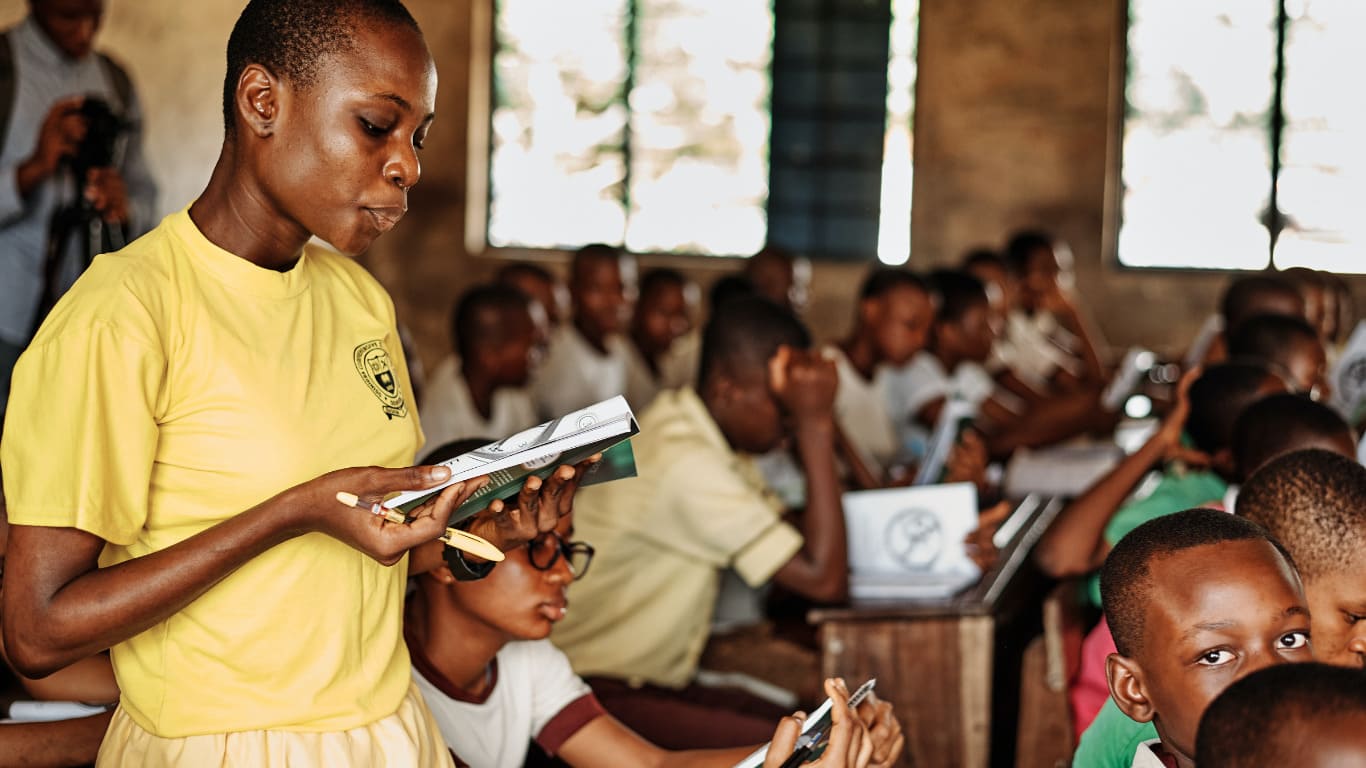Amid adversity, education becomes a beacon of hope and empowerment. This rings especially true in conflict and post-conflict settings.
In these settings, girls are often the most marginalized and vulnerable. They are more likely to be out of school, to experience violence, and to face discrimination.
This blog post will discuss the challenges to girls’ education in conflict and post-conflict settings in Kenya, and explore some of the ways that we can support girls to get an education.
Challenges Faced by Girls in Conflict and Post-Conflict Settings
The following are some of the challenges to girls’ education in conflict and post-conflict settings in Kenya:
Insecurity
Insecurity is one of the biggest challenges to girls’ education in conflict and post-conflict settings in Kenya.
During conflict, schools may be closed or damaged due to violence. Consequently, girls may be afraid to travel to school due to the risk of being caught up in violence. They may also be targeted for violence, such as sexual assault.
According to the United Nations Children’s Fund (UNICEF), 2.6 million children in Kenya are out of school due to conflict and insecurity – 1.4 million are girls.
Additionally, a study by the Peacebuilding through Education organization found that girls in conflict-affected areas in Kenya are more likely to be out of school than boys. The study also found that girls are more likely to be victims of sexual violence while going to or from school.
Insecurity in Kenya has a devastating impact on girls’ education. It prevents them from attending school, which limits their opportunities for a better future. It also exposes them to violence that can have a lasting impact on their lives.
Poverty
According to the World Bank, 43% of Kenyans live below the national poverty line. This means that many families cannot afford to send their children to school, especially girls.
The cost of education in Kenya has been rising in recent years, making it even more difficult for families to afford to send their children to school. For example, the average cost of primary school fees in Kenya is 10,000 Kenyan shillings (USD 100) per year. This is a significant amount of money for many families, especially those living in rural areas.
Girls are more likely to be affected by poverty than boys. This is because they are often expected to help with domestic chores and childcare, which leaves them with less time for school.
For example, a study by the Kenya National Bureau of Statistics found that 62% of girls aged 6-14 years old were involved in domestic chores, compared to 48% of boys.
Gender-Based Violence
According to the World Health Organization (WHO), 1 in 5 girls aged 15-19 years old in conflict-affected countries has experienced sexual violence.
Conflict and displacement expose girls to a heightened risk of gender-based violence, including sexual harassment, exploitation, and early marriages. This not only traumatizes girls but also deters them from pursuing education.
Discrimination
Girls may be discriminated against in education in different ways.
First, they may be discouraged from attending school by their families, communities, or even teachers. They may be told that education is not important for girls, or that they should focus on their domestic duties instead.
For example, a study by the African Institute for Development Economics and Planning found that 20% of girls in Kenya had been discouraged from attending school by their families.
Second, they may also be subjected to violence or harassment if they do attend school.
For example, a study by the Kenya Human Rights Commission found that 10% of girls in Kenya had experienced physical violence at school.
Early marriage and pregnancy
Early marriage is a major problem in Kenya. According to UNICEF, 1 in 3 girls in Kenya are married before the age of 18.
Early marriage often leads to girls dropping out of school. This is because married girls are expected to focus on their domestic duties and childcare, which leaves them with less time for school.
For example, a study by the Kenya Demographic and Health Survey found that 40% of girls who were married before the age of 18 had dropped out of school.
Early marriage can also have negative consequences for girls’ health and well-being. Girls who are married at a young age are more likely to experience complications during pregnancy and childbirth.
Trauma
Girls who have experienced conflict or violence may be traumatized and have difficulty coping.
This can make it difficult for them to concentrate in school and learn new things. They may also need specialized support to heal from their trauma and return to school.
For example, a study by the Peacebuilding through Education organization found that girls who had experienced conflict or violence were more likely to drop out of school than girls who had not experienced conflict or violence.
Limited Access to Safe Learning Spaces
According to the United Nations Children’s Fund (UNICEF), 28 million children in conflict-affected countries are out of school – 13 million are girls.
Conflict disrupts infrastructure and displaces communities, leaving girls without access to safe and conducive learning environments. Schools are often destroyed or repurposed, making education a distant dream for many girls.
A good example is the 2007-2008 post-election violence which led to the displacement of thousands of families. In response, organizations like UNICEF and Save the Children established temporary learning spaces to ensure continuity of education, especially for girls.
Conflict and Post-Conflict Areas in Kenya
Kenya has been affected by conflict and post-conflict for many years. These conflicts have had a devastating impact on the country, including on the education of girls.
Some of the most affected areas include:
- Garissa County: This county is located in northeastern Kenya and is home to many Somali refugees. The county has been the site of attacks by the terrorist group Al-Shabaab. In 2015, Al-Shabaab attacked a university in Garissa County, killing 147 people, including 142 students.
- Lamu County: This county is located on the coast of Kenya and is home to many ethnic groups, such as the Somali and Mijikenda. The county has been the site of attacks by Al-Shabaab and other armed groups. In 2020, Al-Shabaab attacked a hotel in Lamu County, killing 21 people.
- Tana River County: This county is located in eastern Kenya and is home to many ethnic groups, such as the Pokomo and Orma. The county has been the site of violence between different ethnic groups. In 2012, violence between the Pokomo and Orma displaced over 100,000 people.
- Turkana County: This county is located in northern Kenya and is home to the Turkana people. The county has been the site of conflict over resources, such as water and grazing land. In 2016, conflict between the Turkana and Pokot people displaced over 100,000 people.
- Wajir County: This county is located in northeastern Kenya and is home to many Somali refugees. The county has been the site of conflict between different ethnic groups and between the Kenyan government and Al-Shabaab. In 2017, conflict between the Somali and Garre people displaced over 100,000 people.
- West Pokot County: This county is located in northwestern Kenya and is home to the Pokot people. Cattle rustling is a major problem in West Pokot County, and it has a devastating impact on girls’ education..
Ways to Support Girls’ Education in Conflict and Post-Conflict Settings in Kenya
There are many ways that we can support girls’ education in conflict and post-conflict settings in Kenya. Some of these ways include:
Conditional Cash Transfer Programs
Conditional cash transfer initiatives offer financial incentives to families, encouraging them to support their daughters’ education. These incentives involve regular cash disbursements, which are contingent upon the girls’ consistent school attendance and academic performance.
Girls’ Mentorship Programs
Mentorship programs for girls connect them with accomplished female role models. These mentors provide invaluable guidance, support, and inspiration, assisting girls in overcoming obstacles and staying committed to their education.
School Rehabilitation and Construction
Efforts are made to repair and construct schools in conflict and post-conflict areas to establish secure and conducive learning environments for girls. These endeavors aim to replace damaged facilities and build new ones in underserved regions.
Teacher Training and Sensitization
Crucial teacher training programs and sensitization initiatives focus on promoting gender-sensitive teaching methods and preventing gender-based violence in the classroom. Such programs, like the Gender Responsive Pedagogy Training in Kenya, enable educators to create inclusive and safe learning spaces.
Providing Sanitary Products
Organizations offer sanitary products to girls in conflict and post-conflict settings, addressing a basic yet vital need. This intervention ensures that girls can manage menstruation with dignity, reducing the likelihood of school absences due to a lack of access to hygiene products.
Making Schools Safe
Ensuring the safety of schools involves a multi-faceted approach.
This includes providing security personnel to safeguard school premises, undertaking necessary repairs and renovations to restore damaged infrastructure, and actively engaging in community initiatives aimed at reducing violence in the surrounding areas.
These measures collectively contribute to creating an environment where girls can pursue their education without fear.
Challenging Discrimination
Tackling discrimination against girls in schools and communities is a fundamental step toward achieving gender equality in education.
This entails challenging deep-seated attitudes and behaviors that perpetuate discrimination. Additionally, we can provide unwavering support to girls who have faced discrimination is essential in ensuring that they receive equal opportunities and encouragement to excel in their studies.
Providing Comprehensive Sexuality Education
Comprehensive sexuality education is a vital component of girls’ education. It equips girls with the knowledge and skills to protect themselves from early marriages, unintended pregnancies, and the risk of HIV/AIDS.
This education empowers girls to make informed decisions about their reproductive health, future, and relationships.
Providing Psychosocial Support
Many girls in conflict and post-conflict settings have endured trauma and violence. Offering psychosocial support is crucial to their healing process and their ability to return to school.
This support includes counseling, therapy, and interventions designed to help girls cope with their traumatic experiences and regain their emotional and psychological well-being, ultimately facilitating their reintegration into the educational system.
Conclusion
Supporting girls’ education in conflict and post-conflict settings in Kenya is essential for breaking the cycle of poverty and violence. By addressing the unique challenges faced by girls and implementing targeted initiatives, we can empower them to become leaders, changemakers, and agents of peace in their communities.
Help Put Her Best Foot Forward Africa Empower Girls in Kenya!
At Put Her Best Foot Forward Africa, we’re on a mission to transform the lives of the girl-child in Kenya and beyond. With your support, we can make a real difference!
Your donation can help us to:
- Provide safe and secure schools for girls.
- Give girls access to transportation to and from school.
- Provide psychosocial support to girls who have been affected by conflict.
- Promote gender equality in education.
Click Here to Donate today! Your donation can change lives, uplift communities, and create a world where every girl reaches her full potential.
Thank you for your support!

